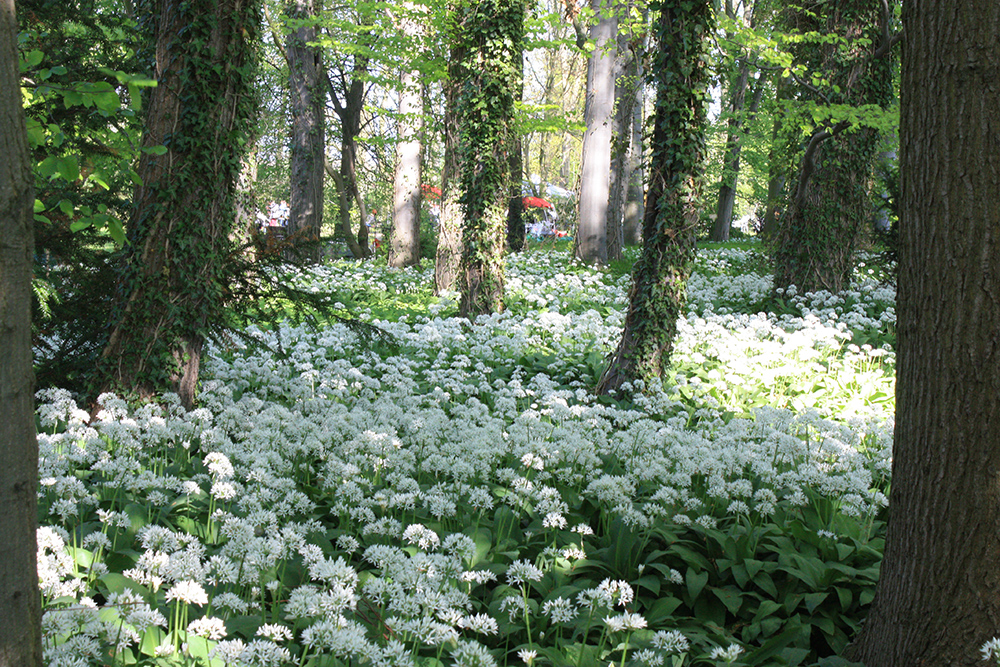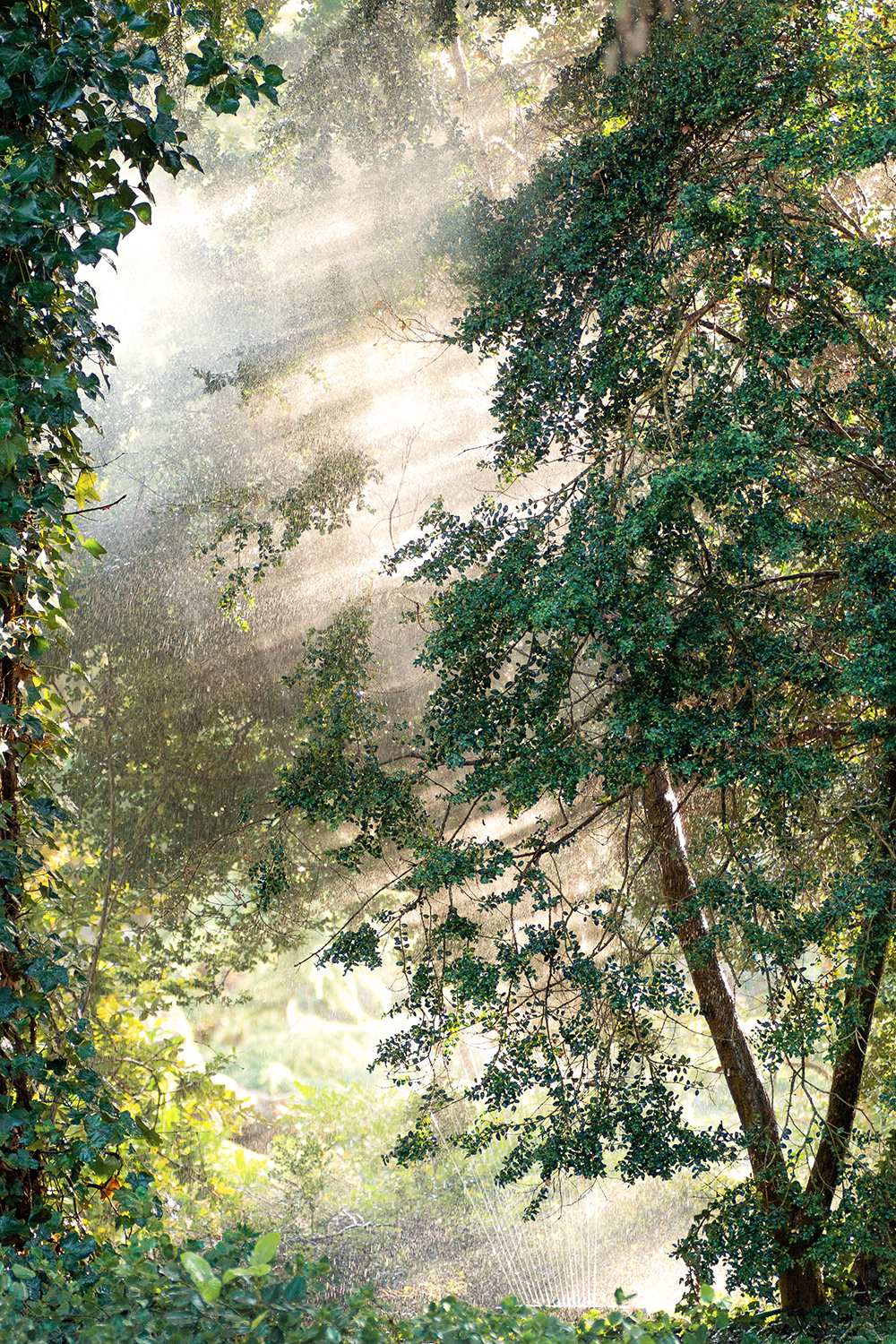Beech Forest Habitat
Without human impact, beech forests would be the clearly dominant habitat type in Central Europe. Here, the European beech (Fagus sylvatica) shows remarkable growing and competitive power against other plant species. It is able to colonize ecological sites that never become extreme in terms of their ecological characteristics in a most efficient way, namely by monopolizing sunlight and shading out other plants. The population in the Botanical Garden shows an example of the current state of forest development in temperate latitudes in the course of evolutionary history. In the herb layer, different aspects develop during the course of the vegetation period as a function of light supply. A part from a Typical Variant of the Galio or Asperulo odorati-Fagetum sylvaticae, a Thermophytic Variant and a Moist Variant with wild garlic (Allium ursinum) are being developed.
Alder Carr Habitat
Next to the beech forest habitat an alder carr habitat is planned to be established in a wetland of the Kayenmühlengraben stream. This type of forest is a typical part of the natural marsh vegetation of the lowlands and low mountains of Central Europe. The relatively open canopy left by the black alder (Alnus glutinosa), that will be coppiced like in former times, allows much light to reach the forest floor, creating the lushest and most colorful herbaceous layer of Central European forests. Among today’s European forests, this type is the one that tolerates the longest periods of flooding.
Tertiary Forest Collection
Directly neighboring the contemporary beech and alder forests, a plant collection is planned to be established which shall display the Carbon Age forest flora of 10 to 20 Million years ago. With these different plant communities located next to each other, the evolutionary progress of plant development and the concomitant change in forest cover in Europe and other parts of the world will be able to be studied by direct comparison. In this section, which is also connected to the pine, spruce, and fir collection, there are sizeable ancient conifer-related tree specimens, including deciduous trees such as the bald cypress (Taxodium distichum), the dawn redwood (Metasequoia glyptostroboides), the ginkgo (Ginkgo biloba), and larches (Larix spp.), as well as evergreen species such as the giant sequoia (Sequoiadendron giganteum), the coast redwood (Sequoia sempervirens), the monkey-tail tree (Araucaria araucana), the umbrella pine (Sciadopitys verticillata), yews (Taxaceae), and members of the Cephalotaxaceae family.



